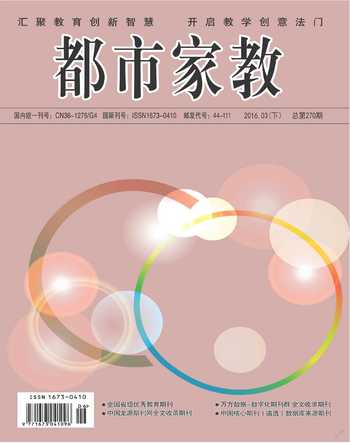Comparative Study of Cultural Connotations of English Color Terms
付晓霞
Abstract:The present study is to study four English basic color terms. This thesis adopts comparative method to study the cultural connotations of basic color terms.
Key Words: Synonymy, Polysemy
1 Black and red
1.1 FSF of Synonymy of Black and red
Strong Emotion
“Red” and “black” can be referred to angry and furies like “see red” and “black look”.
1.2 FSF of Polysemy of Black
Anger
Some expressions in English “a black lark” (怒容), “go black in the face” (气得脸色发青) show the meaning of anger and furies.
1.3 FSF of Polysemy of Red
Blood, Danger
Red in the western culture mainly refers to color of blood, and in minds of westerner, blood is the “liquid of life”, so the westerns always associate red with the violence and dangerous.
2 White and Green
2.1 FSF of Synonymy of White and Green
Hope
“White” and “green” can indicate hope, which see in “white hope” and “green boys and girls”.
2.2 FSF of Polysemy of White
2.2.1 Virtue, Honesty and Uprightness
White stands for honesty and uprightness, such as a “white spirit”. A “white wizard” has a “white spirit or soul”, using his or her “white magic” to do a good deeds for people, and therefore he or she is “white-handed” (正直的,诚实的).
2.2.2 Harmlessness and Kindness
In contrast to a “black lie”, a “white lie” is supposed to be harmless one without intention of harm or deceit.
2.3 FSF of Polysemy of Green
2.3.1 Nobility
Scottish people take green clothes as the symbol of dignity; while the national color of Irish is also green.
2.3.2 Permission
Both green-light in English and Chinese are associated with authoritative permission to go ahead with some project. Apparently, they are derived traffic regulations.
3 Discussion
3.1 Within English: FSF of Synonymy
3.1.1 Strong Emotion
“Red” and “black” can be referred to angry and furies like “see red” and “black look”.
3.1.2 Hope
“White” and “green” can indicate hope, which see in “white hope” and “green boys and girls”.
References:
[1]Berlin, B. & Kay, P.. (1969). Basic Color Terms: their University and Evolution [M]. Berkey: University of California Press.
[2]胡状麟.《语言学教程》[M].北京:北京大学出版社,2006,第3版.
[3]姚小平.《基本颜色词理论兼述—兼论汉语基本颜色词的演变史》[M].《外语教学与研究》,1988.

